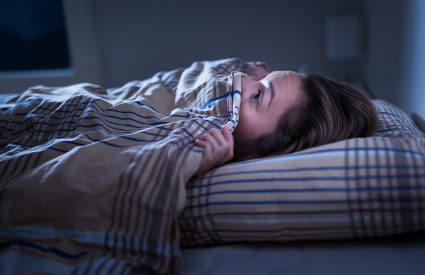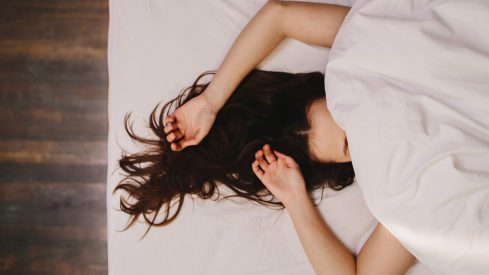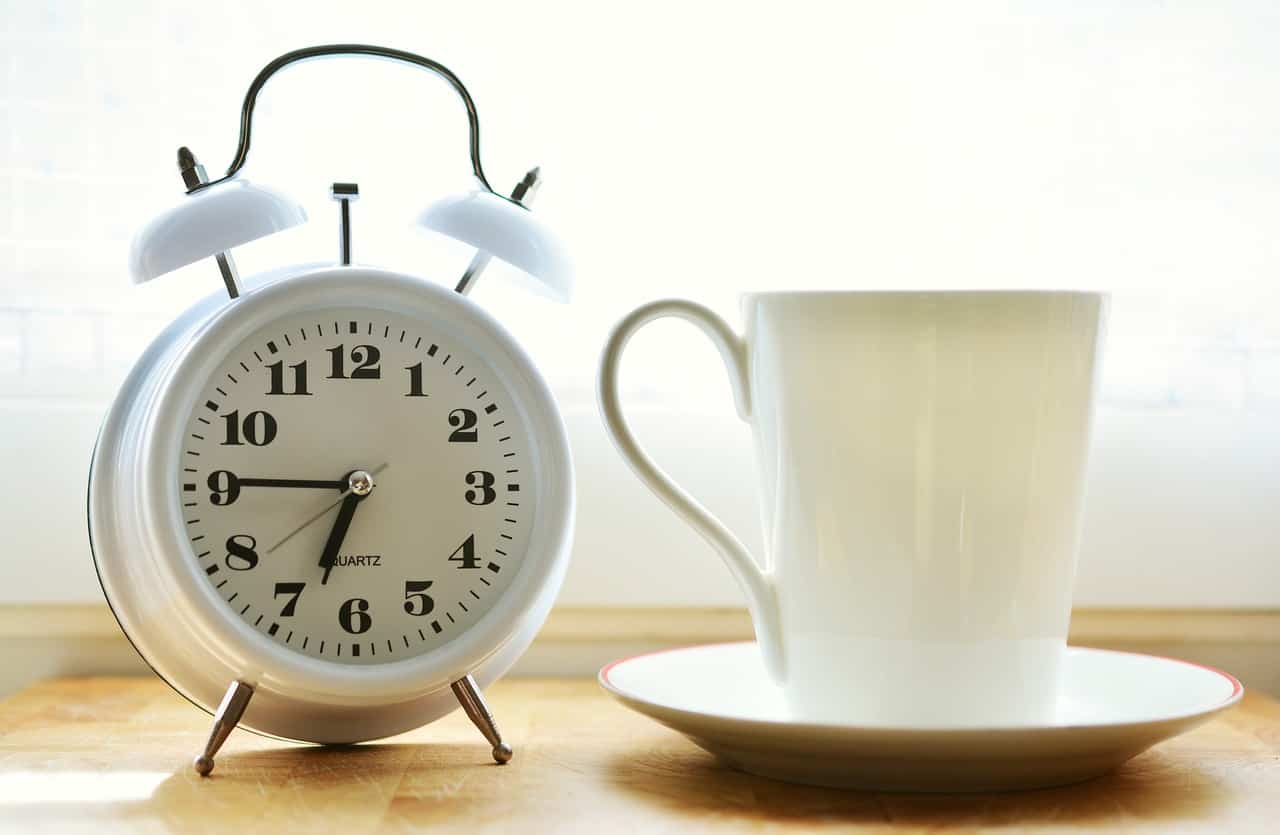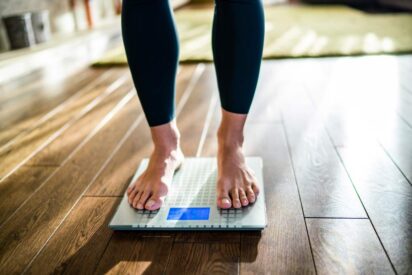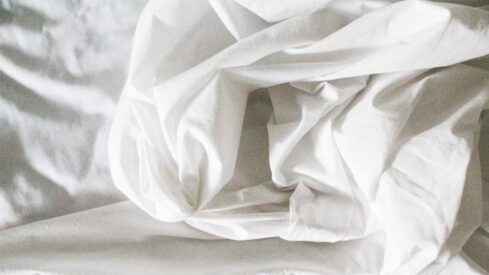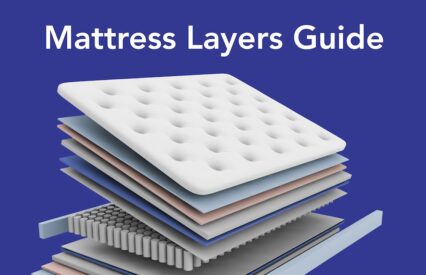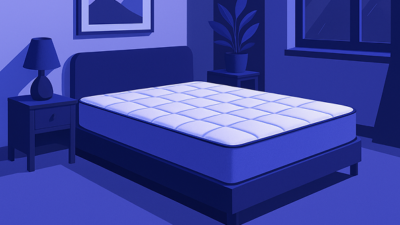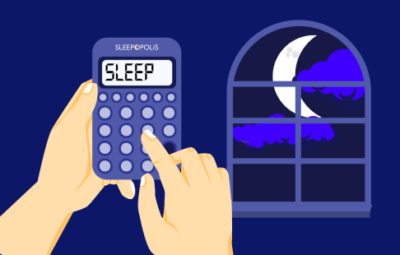Laying your head down on one of the best pillows works wonders in terms of getting a good night’s sleep, so the least you could do is keep it clean.
Sure, you keep it covered with a high-quality pillowcase to protect it from the usual yucky stuff like sweat, oils, drool, dust mites, and even dead skin cells. Letting that gunk accumulate over time is not good for you or your pillow, so it’s prudent to give it a good wash on the reg.
Problem is: Many people don’t know how to wash a pillow correctly, so they’re left with the choice between risking damage to the pillow or letting it get increasingly nasty from neglect.
Don’t worry — we’ve prepared this guide to teach you how to wash your pillow the right way, including why it’s important, how to check if your pillow needs a good wash, how to wash different types of pillows, and so much more.
Why Washing Pillows Is Important
Pillowcases are great for providing some protection to the pillow, but they’re primarily built for comfort. They’re not an impenetrable barrier, so eventually a buildup of sweat, body oils, dead skin cells, and more will seep its way into the pillow and create a lovely place for allergens and bacteria to thrive.
It’s more than just a gross mental image; sleeping on a dirty pillow can have a negative impact on your health too. According to the Journal of Korean Medical Science1, pillows “are known to contain significant levels of indoor allergens and endotoxin,” which may cause or contribute to allergic reactions, like coughing, sneezing, itchiness, and respiratory issues.
Letting sweat, drool, and other moisture seep into your pillow may also create a potential health hazard. A 2021 case report2 identified mold growth in a foam pillow as the possible cause of one patient’s hypersensitivity pneumonitis, an inflammatory lung disease characterized by symptoms such as coughing, shortness of breath, fever, chills, chest tightness, and fatigue.
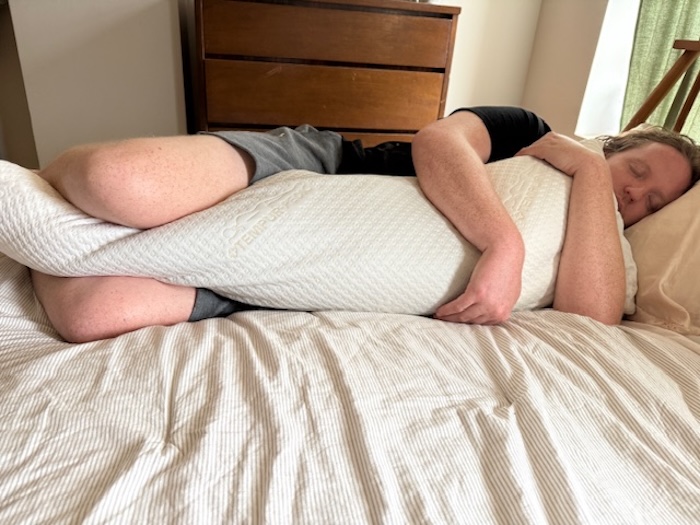
The best and easiest way to reduce or eliminate your risk of suffering adverse health effects is by giving your pillow — not just your pillowcase — a thorough cleaning every 4 to 6 months. Once you know how to wash pillows the right way, it’s a simple and straightforward measure you can take to protect your health and guarantee you’re getting the best quality sleep possible.
How to Check If Your Pillow Needs Washing
You’re reading about that awful stuff in the previous paragraph and you can’t help but wonder: “Should I wash my pillow, like now?” Look out for the following to tell if it’s time:
- Visible stains: Sweat, drool, and moisture often stains or yellows the pillow over time. If you can see a pronounced stain or ring of yellow when you take off the pillowcase, you’ll probably want to wash the pillow sooner rather than later.
- Bad smells: It’s unlikely that your pillow is going to reek to high heaven, so you’ll have to put your nose up to it and get a whiff to tell. If it’s stinky or musty, it’s time to get sudsy.
If your pillow doesn’t exhibit any of the above, it’s still prudent to give it a good wash once every 4 to 6 months, especially down pillows, feather pillows, and synthetic pillows. Latex and memory foam pillows, on the other hand, often can’t go in the washer, so you’ll want to give the covers a monthly cleaning and spot-clean the foam itself as needed.
General Washing Instructions
Many people know that you should wash your pillow and why it’s important, but they’re not quite sure how to do the deed without damaging the pillow or ruining it forever. We get it—high-quality pillows cost a pretty penny, but washing them should prolong their lifespan as long as you wash them properly. Follow our step-by-step guide and you’ll be golden.
Step 1: Read the Label
Pillow manufacturers often do their best to equip you with the knowledge you’ll need to get years of reliable use from their products. So, the easy step one is to locate that care label and have yourself a looksie.
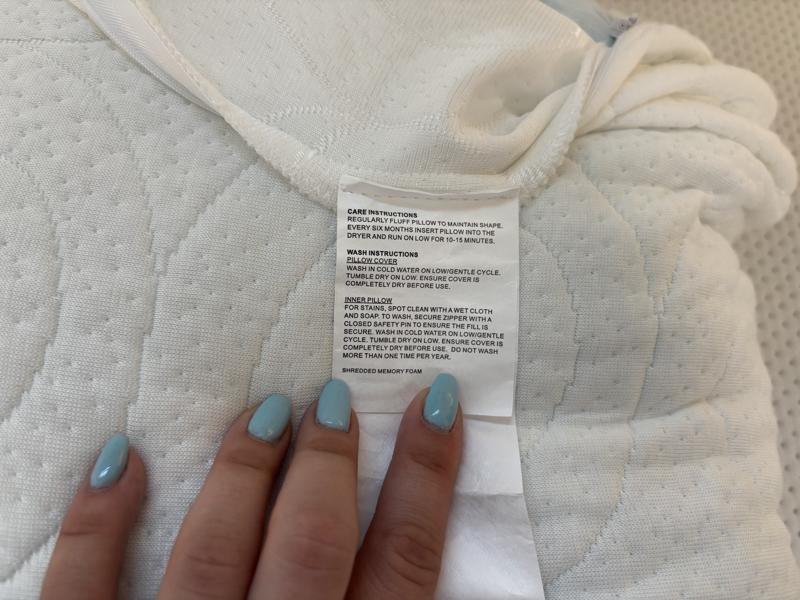
Some pillows can be confidently deposited in the washer, others require hand washing or spot cleaning only. Hopefully, the label will give you your first clue as to how you’re going to succeed at washing your pillow properly.
Step 2: Select the Right Settings
You’ll want to use a mild laundry detergent and run a gentle cycle using warm water. Cold water may be fine, depending on the type of pillow, but hot water is often not recommended because it may damage the pillow.
Front-loading washers also tend to be gentler on the materials since they don’t have an agitator. You don’t necessarily have to cart your pillows to the local laundromat if you happen to have a top-loading washing machine, but you may consider running a gentle wash cycle with low or no spin cycle to reduce the risk of your pillow getting damaged.

We do not recommend using bleach on your pillow unless the label specifically says it’s okay. Bleach works well as a stain remover, but it can destroy synthetic fibers, strip natural oils from feathers, and deteriorate foam filling, leaving your pillow much worse for wear.
Step 3: Double Up!
Your pillow is a light and fluffy delight when you’re sleeping on it, but it becomes a waterlogged wrecking ball on the inside of your washing machine, bound to knock your machine off balance at any moment. You can mitigate that possibility by washing two pillows simultaneously.
Step 4: Run an Extra Rinse Cycle
Soap suds that get stuck inside the pillow may wreak havoc on the filling, resulting in lumps and clumps that you won’t want to sleep on. Running an extra rinse cycle ensures that the soap and detergent residue gets totally washed away, keeping your pillow clean and pristine.
Washing by Pillow Type
The type of pillow you own also factors into how you should approach cleaning it. That’s why we have a few cleaning tips and hacks based on the type of pillow you use.
Down and Feather Pillows
Down, feather, down and feather, and down alternative pillows tend to be good in the washing machine. Use a gentle cycle with a small amount of mild detergent, but skip the fabric softener. Fabric softener is known to coat the feathers and reduce their natural fluff, which may diminish your pillow’s loft as a result.
Memory Foam and Latex Pillows
Although many latex and memory foam pillows feature removable pillow covers that may be machine washed, the pillows themselves should never go in the machine. Agitation often breaks foam apart, replacing your lovely, fluffy pillow with a limp mess.
Instead, spot-clean with a cloth and mild soap using minimal water. Always start by following the spot-cleaning instructions on the tag, and if those don’t work other spot-cleaning techniques can also be researched. There’s a whole science with lots of tricks and hacks that people have learned about spot cleaning different kinds of stains from specific materials.
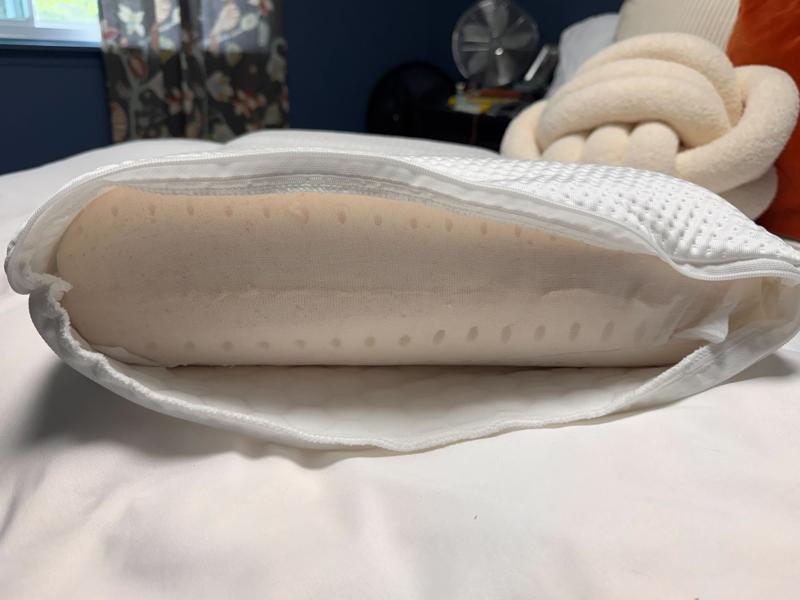
Polyester and Synthetic Pillows
Synthetic fill is durable and easy to clean, easily making it one of the most convenient and low maintenance options. They do great in the washing machine, regardless of what type you use, and tend to dry quicker than natural pillows too.
Specialty Pillows
We’re talking cooling gel, wedge, contoured, and more; because these pillows typically combine multiple materials, you’ll have to follow the manufacturer’s care instructions to a T.
If the label is anything less than explicit, err on the side of caution and limit its care to spot cleaning and hand washing only.
Drying Pillows Properly
Washing your pillow properly is only half the battle — you have to dry it properly, too.
Leaving excess water on the inside of your pillow may contribute to mold, mildew, or bad odors that you definitely don’t want anywhere near your face while you’re sleeping. So, if you want to finish the job right, you’ll want to follow our quick tips for how to dry your pillow properly too.
- Toss ‘em in the dryer: Down, feather, and synthetic pillows often can go straight from the washer into the dryer. Tumble dry on a no-heat or low-heat setting and don’t be shy about running extra cycles if the pillows don’t feel totally dry. You may also want to add a couple of tennis balls or dryer balls to break up clumps of stuffing inside your pillow and restore its natural loft.
- Air dry: Some pillows, like foam, specialty, and throw pillows, can’t go in the washer, so air drying is your only option. Lay them flat on a ventilated surface and occasionally flip them so that both sides dry evenly. You may be thinking that you want to put them out in direct sunlight to expedite the process, but don’t! The heat can damage or deteriorate some fillings, so you’re better off not risking it and keeping the sun out of this equation.
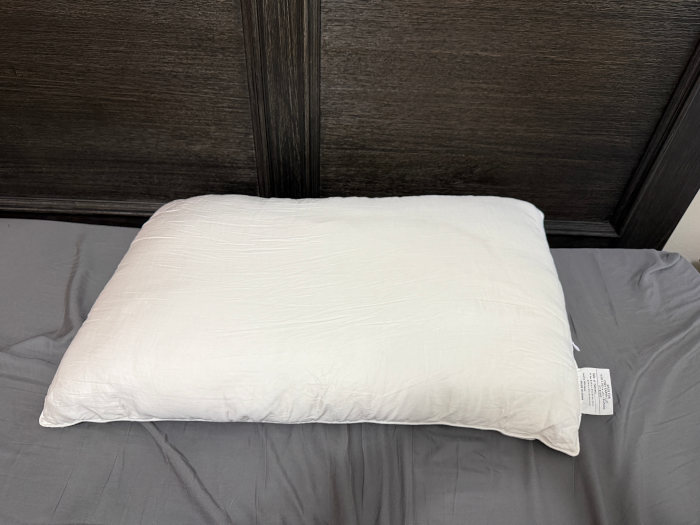
Remember — a pillow that stays even slightly damp can become a breeding ground for mold and mildew, putting you and your health at risk. Always make sure your pillows are totally dry before you put them back on your bed and sleep.
Extra Pillow Care Tips
An occasional deep clean should help prolong your pillow’s lifespan by preventing the buildup of bacteria and allergen, but it’s not the only measure you can take to keep your pillow in top form. Here are a few more quick tips to care for your pillow and enjoy it for years to come.
Use Pillow Protectors
According to the Journal of Allergy and Clinical Immunology3, using a pillow protector can lead to a “significant long-term reduction in [house dust mite] allergen concentrations.”
That’s because this simple, relatively inexpensive, and conveniently machine-washable item serves as an extra barrier to absorb unwanted stuff like sweat, drool, body oils, dust mites, and other allergens that would otherwise wind up inside the pillow and become a nuisance or health hazard.
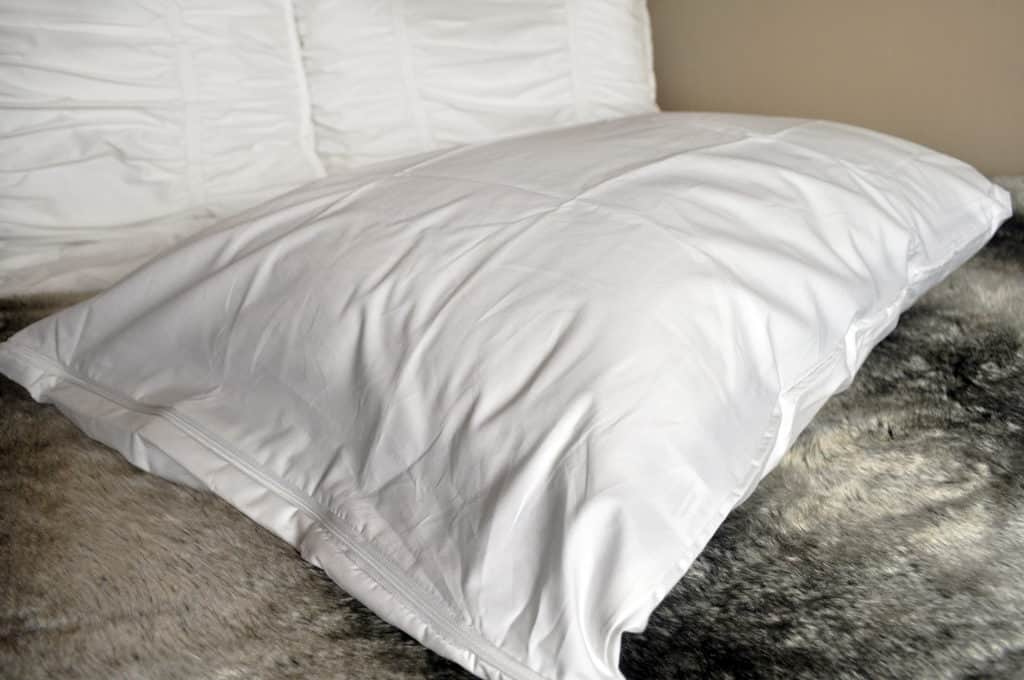
So, don’t make your life more complicated than it needs to be: Use pillow protection and buy a pillow protector today!
Fluff Regularly
The filling risks clumping during the wash and dry cycles, but fluffing your pillow regularly may combat this between washes. A quick fluff every morning helps redistribute the filling, maintain loft, and keep your pillow feeling supportive. Plus, it takes literal seconds, so it’s a good habit to get into for preserving your high sleep quality and prolonging the lifespan of your pillow.
Replace as Needed
Nothing good lasts forever, and pillows are no exception. If your pillow is chronically flat, lumpy, or resistant to fluffing, then it may be time for a new pillow rather than another wash.
Often, you might see your pillow finally succumb to wear-and-tear after roughly one or two years, but you may get more life from durable synthetic pillows, high-quality down pillows, and other luxury brands that use only premium materials.
Conclusion
Washing your pillows regularly keeps them looking nice, and it also promotes good hygiene and healthier sleep by preventing a buildup of bacteria and allergens. Following our guide for how to wash your pillow the right way may even prolong your pillow’s lifespan, guaranteeing you get great sleep for many years to come.
So, don’t sleep on this important chore: check the care tag on your pillow and find out how to clean your pillow properly now.
FAQs
How often should you wash pillows?
The exact timing depends on what type of pillow you own, but you should expect to wash your pillow every four to six months, generally speaking. If you have allergies or tend to sweat a lot while you sleep, you may want to wash them more often than that to keep everything fresh and clean.
Can you put pillows in the washing machine?
Down, feather, and synthetic pillows are usually machine washable, but always check the care label first. Generally speaking, memory foam and latex pillows should never go in the washer.
What’s the best way to dry pillows after washing?
For down, feather, and synthetic pillows, tumble dry on low heat with dryer balls or clean tennis balls to prevent clumping. Memory foam and specialty pillows, on the other hand, should be air dried flat on a ventilated surface.
Whatever the method, make sure the pillow is completely dry to avoid mold and mildew.
How do you clean pillows that can’t be washed?
Where there’s a will, there’s a way.
Pillows that are not machine washable can still be cleaned using a cloth, mild soap, and a little bit of water. A sprinkle of baking soda works well to absorb odors and excess moisture too—just don’t forget to vacuum it off the pillow before you lie down to sleep!
Of course, the best method of protection is prevention, so be sure to pair our above cleaning methods with a high-quality pillow protector, too. A combination of these tactics and things will be your best defense against bacteria, allergens, and the adverse health effects they cause.
Sources
- Nam HS, Park CS, Crane J, Siebers R. Endotoxin and house dust mite allergen levels on synthetic and buckwheat pillows. J Korean Med Sci. 2004;19(4):505-508. doi:10.3346/jkms.2004.19.4.505
- Moran-Mendoza O, Aldhaheri S, Black CJA, Clements-Baker M, Khalil M, Boag A. Mold in Foam Pillows and Mattresses: A Novel Cause of Hypersensitivity Pneumonitis. Chest. 2021;160(3):e259-e263. doi:10.1016/j.chest.2021.04.068
- Halken S, Høst A, Niklassen U, et al. Effect of mattress and pillow encasings on children with asthma and house dust mite allergy. J Allergy Clin Immunol. 2003;111(1):169-176. doi:10.1067/mai.2003.5


